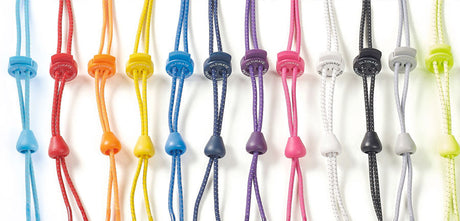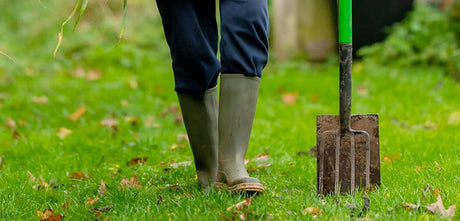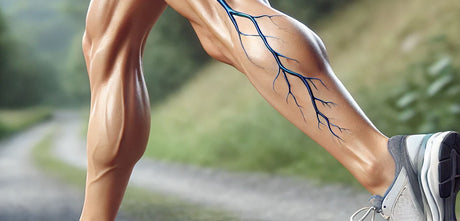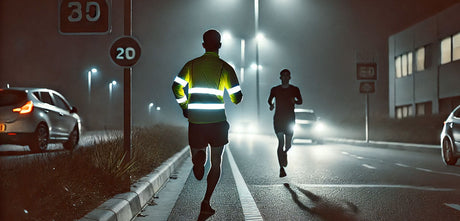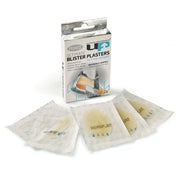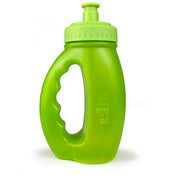Walking injuries are not uncommon if you walk far enough. Here are 8 common walking injuries and how to avoid them.
1. Sprained Ankle
One of the most common walking injuries. An ankle sprain occurs when the ligaments surrounding the ankle joint are stretched or torn. Often you are walking along happily when suddenly your ankle rolls outwards. If you are lucky (and have good proprioception) your ankle automatically rights itself and you avoid significant injury. If not, you could suffer a severe sprain that takes weeks to heal.
Avoid ankle sprains in the first place by strengthening your ankles with balance-type exercises. A simple exercise is to stand on one leg with your eyes closed. You should be able to balance without wobbling much for at least a minute.
Also, if you have weak, unstable ankles with stretched ligaments, or are recovering from injury then wear an ankle brace or support. Whilst no brace can prevent injury, it can give you a little bit of support. Or use sports tape to strap your ankle up using a stirrup-type support strapping.
You are most at risk of a sprained ankle when you get tired. So take breaks and concentrate that little bit more if fatigue starts to set in. If you do suffer an ankle sprain then apply the PRICE principles of Protection, Rest, Compression and Elevation. Then follow a full rehabilitation program.
2. Plantar fasciitis
Probably the most common cause of heel pain, this stubborn condition involves inflammation, or more likely degeneration of the Plantar fascia under the foot, specifically at the point it attaches to your heel.
Symptoms consist of gradual onset heel pain, which is often worse first thing in the morning or following a rest period. Later, symptoms improve as your foot warms up, only to return again.
Avoid Plantar fasciitis by wearing the right footwear. If you overpronate then consider wearing arch support insoles in your walking boots or shoes. Tape your foot with zinc oxide sports tape to support your arch if you feel symptoms coming on.
3. Shin Splints
Shin splints is the name often given to pain on the inside of the shin, and is not a specific injury. The most common cause is medial tibial stress syndrome caused by overuse. Symptoms consist of gradual onset of inner shin pain, which is worse when you walk or run and eases with rest.
A common factor for shin pain in walkers again, is poor foot biomechanics, especially overpronation where your foot rolls in or flattens.
Avoid shin pain by wearing arch support insoles such as the Ultimate Performance Support+ if you overpronate. Stretch your calf muscles at the back of the lower leg regularly and better still use a foam roller. If you have shin pain then apply ice or cold therapy for 10 minutes, especially after walking.
4. Blisters
Blisters are fluid-filled pockets that form on the skin due to friction and pressure. Walking long distances or wearing ill-fitting shoes can contribute to the development of blisters.
Prevention is by far the best cure for blisters. If you are on a long walk and think you might be susceptible then protect your feet with zinc oxide sports tape. The 3.8mm tan tape is best! For even more protection apply blister plasters to problem areas such as the back of your heel and instep. Also, Toe protectors slip over your toes protecting them from rubbing against each other.
5. Achilles Tendonitis/tendinopathy
This is inflammation (or more likely degeneration) of the Achilles tendon at the back of your ankle. Pain, stiffness and soreness develops gradually over time, becoming progressively worse. It is often worse first thing in the morning.
It is important you notice the early warning signs of this one because your injury may become chronic if left. Chronic Achilles tendon pain may also lead to a complete rupture, especially in men over 40 years old.
Again, apply cold therapy or ice after walking if you notice any early warning signs. If your feet flatten as you walk then your Achilles tendon twists. As a result, you have more tension and strain on your twisted Achilles tendon, making this overuse injury much more likely. Therefore, wear arch support insoles to correct poor foot biomechanics.
6. Stress Fractures
Stress fractures are small cracks in the bone caused by repetitive stress and overuse. They commonly occur in the feet and lower legs and can be accompanied by pain and swelling. It is often difficult to diagnose stress fractures because symptoms are similar to other overuse injuries, for example, shin splints. Also, stress fractures do not show up on X-ray until they have started to heal.
To avoid stress fractures the same principles apply. Do not overdo it, notice early warning signs and ensure you have the right footwear and orthotic insoles if needed.
7. Corns and Calluses
Corns and calluses are thickened areas of skin that develop due to repetitive friction or pressure. They often form on the toes, heels, or balls of the feet and can be painful. Calluses form on weight-bearing parts of the body and corns on non-weight-bearing areas.
They are caused by pressure on the skin, often from poor foot biomechanics or badly fitting shoes.
8. IT Band Syndrome
Iliotibial band syndrome is an overuse injury causing pain on the outside of the knee. The Iliotibial (IT) band is a thick band of tissue that runs along the outside of the thigh. The band rubs on the outside of the knee, eventually causing it to become inflamed.
If you have symptoms then rest and apply cold therapy. Potential causes include a tight iliotibial band and/or weak gluteal muscles. Prevent it by stretching regularly and doing hip activation exercises. An IT band strap helps reduce painful symptoms.
9. Dehydration
Dehydration is excessive loss of water from the body. This happens for numerous reasons but when walking, failure to take on sufficient fluids will affect your performance, or worse. Use a specially designed Walking Hydration Pack to stay hydrated on the move. These are backpacks which contain a water filled bladder, drinking tube and a bite valve.
It's important to note that if you experience any persistent or severe pain, it is advisable to consult a healthcare professional for a proper diagnosis and treatment.




